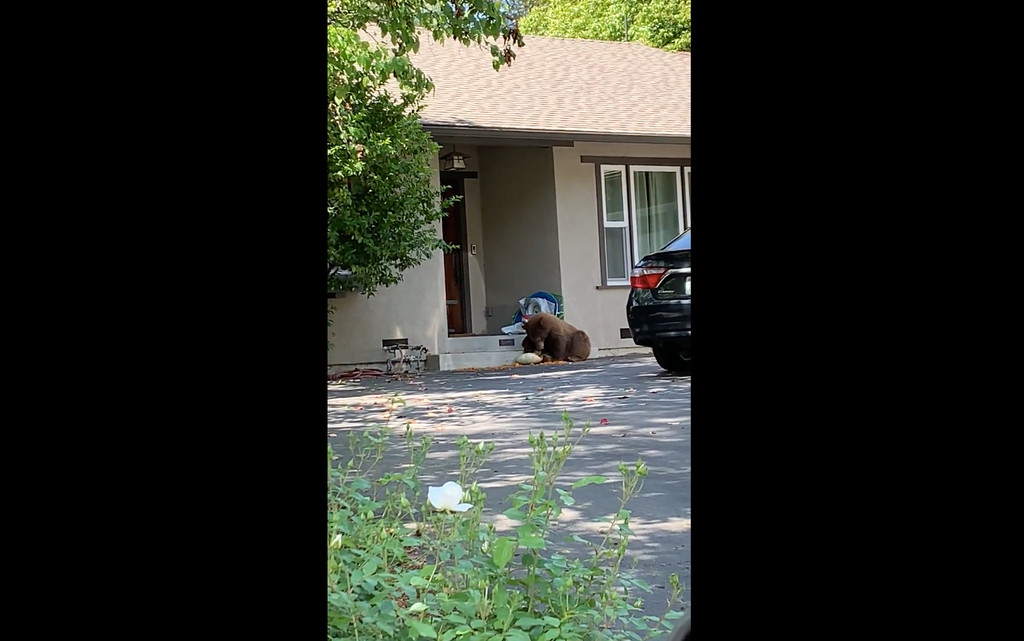
A sheriff’s department in a suburb outside of Los Angeles came across a sight that, they warn, could become all the more common as the seasons shift from California’s typically moderate spring to the dry unrelenting scorch of summer.
The Crescenta Valley Station, part of the Los Angeles County Sheriff’s Department, captured a video on Thursday of a bear just a paw-grab away from the entryway of a home in the region’s suburbs.
Likely a black bear, as they’re the only species that remains in the West Coast state since grizzlies became extinct in the 1920s, according to the California Department of Fish and Wildlife (CDFW), the uninvited guest appears to be snacking on what the recording officers guess is some leftover pumpkin, perhaps left out in the garbage or plucked from a nearby garden.
They were unable to confirm, however, since they maintained a safe distance from the ravenous creature.
While it’s not uncommon to catch a bear getting their five daily servings of fruits and vegetables in (black bears are omnivores and are known to have a varied diet, subsisting on a mixture of plants, meat and berries), the sheriff’s department warned that these close encounters will likely become more frequent as the temperatures rise and the bears come out of hibernation with a hankering for filling their empty stomachs.
The CDFW notes that each spring they begin to receive an uptick in calls about bear sightings, particularly for people who reside in areas that overlap with the animal’s natural habitat – typically mountainous areas.
The foothills, such as where this black bear was supposedly sighted by the sheriff’s department, are a common place where these hibernating wanderers could amble into, particularly as, the CDFW notes, some have become used to the presence of people and as a result might display less fearful and avoiding behaviour (the more natural response for bears to humans).
There are studies underway to try to better understand why bears may be coming to town. And though there’s no concrete evidence yet to support that the climate crisis is to blame for the increasing presence of bears in urban settings. Experts and residents on the ground explained to The Independent that they’ve been able to draw a link between a warming planet and human and bear interactions.
“Things like drought, that affects bear foods,” John Hechtel, president of the International Association for Bear Research and Management, told The Independent.
In California, where the state is staring down its third straight year of parched conditions after a disappointing amount of desperately hoped-for snow and rain, the knock-on effect is hitting some of the bears’ prime resources for fattening up in the months before hibernation, forcing them to venture into regions where their stomach knows they’re guaranteed a meal.
“[Warming temperatures] can affect berry production. It can affect returns of salmon to certain streams ... if the water temperatures get too hot or if there’s not enough water in the stream system to allow adequate salmon. There’s a lot of sort of interconnected relationships between climate, the habitat and potential food sources,” Mr Hechel told The Independent last year.
To avoid these unwanted encounters, the CDFW advises folks living in close proximity to these scavenging bears to be “bear aware”. This laundry list of best practices and tips, they say, won’t guarantee a bear won’t come stumbling into your trash bins, but they do say it should help mitigate the chances.
These include: purchasing a bear-proof garbage bin, waiting to take the trash out till the morning, not leaving food, garage and pet food in your car, and making sure you’re not throwing away any attractive snacks in your yard (keeping your grills locked up in a garage is also advised).







